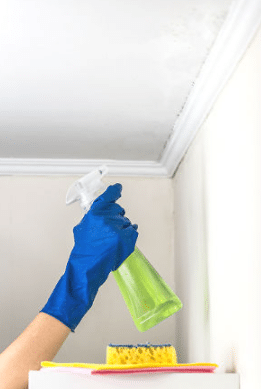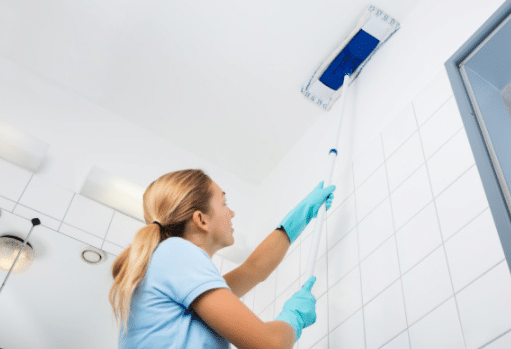For many people, cleaning the ceiling can be a difficult task. All kinds of cleaning methods exist, yet it’s important to know what kind of texture you have before starting your job. The following article will present some common sense rules to follow so that your textured ceiling turns out clean and well-maintained!
Explanation Of Textured Ceilings

There are two main types of textured ceilings: popcorn and orange peel. There are other textures, but they do not differ much from these two main categories. Orange peel texture is usually in upscale homes or businesses. It’s smooth with shallow indentations that create raised lines all over the surface. These can come in various shapes and thicknesses throughout its overall look, giving it a unique appearance. The popcorn texture is the opposite of the orange peel. It’s rough with shallow indentations that create very noticeable large or small lumps all over the surface.
What You Should Know About Cleaning Textured Ceilings

Using the wrong cleaning methods can damage your textured ceiling if you lack patience and attention to detail. For instance, using a pressure washer on a textured ceiling will only succeed in scratching off pieces from its surface, leaving some parts clean while others dirty looking. Using a scrubbing brush on your ceiling will leave it even more scuffed than before unless the texture is extremely smooth. The way to avoid these issues is by observing the type of texture you have first, following all cleaning steps carefully yet efficiently, removing stains as soon as they appear to avoid permanent damage to your ceiling.
What You Will Need

Cleaning a textured ceiling may be simple, but it requires the right tools. Make sure to have plenty of time too, as it can take several hours for this task. The following are things that you will need:
- A ladder: Make sure you have a sturdy, extendable ladder. This will ensure that you can reach the entire ceiling from any point in your house.
- A bucket: You can use a traditional bucket with water and soap or purchase a specialized tool for this task.
- Rag/Microfiber cloth: These are the best tools to wipe up excess dirt. They are also easy to wash.
- Cleaning product(s): There are many options depending on how you want your ceiling to look that day. Make sure not to use something with bleach as it can cause discoloration.
- Dust mask: Depending on how much dust is up there, you may need one of these (to prevent allergic reactions). Eye protection is recommended as well, as you don’t want to get dust in your eyes.
The Process

Now that you have all the tools, it’s time to start cleaning! Refer to the list above and follow these steps:
Tape off around the area
This is a good measure against accidental spilling of anything harmful. It will prevent a big mess if a bottle falls over during your work.
Be careful around edges
These are usually more delicate than other parts of the textured ceiling. Cleaning these without scratching the edges is essential to retain their structural integrity.
Wash your cloth
Don’t use it for anything other than what’s intended. Your microfiber cloths are better suited for this type of task, so wash them often if you need to wipe too much dirt off. Don’t leave them lying around where they can pick up dust.
Do not pressure wash or scrub
This will apply especially if your ceiling is painted or has wallpaper glued on top of it. You can scrape off some dirt if you need to, but any additional pressure will only make things worse.
Don’t spray all at once
Give each section a few sprays before wiping with rag/microfiber cloth. This way, you won’t be wasting product by using too much cleaner or having excess dirt rubbed back into the ceiling after cleaning.
Don’t spend too much time working on one area
Keep changing your position if possible. For example, if you want to clean a section of 10 square feet, spend 30 seconds to 1 minute cleaning each square foot all over again. This will ensure that you clean every part properly.
If Necessary, Hire Professional Help

Even though this guide explains how to clean a textured ceiling yourself, there are certain jobs that an amateur can’t do. If you have any doubts about your ability to clean your ceiling properly, it’s best to hire someone who specializes in this type of thing.
Conclusion
Textured ceilings are harder to clean than regular flat surfaces. It’ll take longer and use up more resources to get the best results most of the time. However, if you follow this guide closely, you can save yourself a lot of unnecessary work and still get good results!


